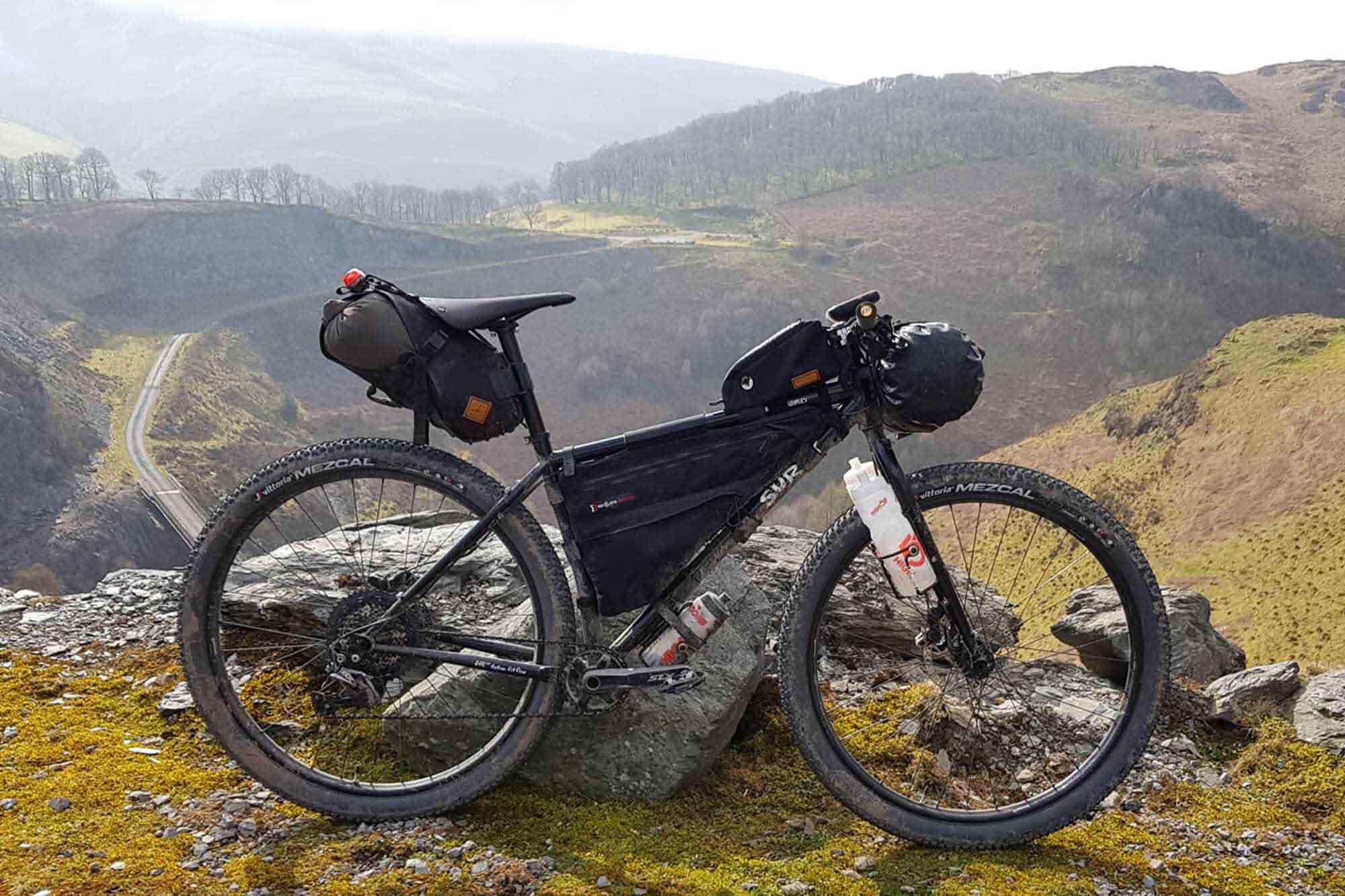Greetings,
Humanoids have but a few basic needs. Among them are food, water, air, and shelter. I might also include good boots and a couple Jim Harrison novels, but maybe you’re into Crocs or you had an English teacher who made you allergic to fiction. We can revisit all that another day. For now, we’re here to talk about bikepacking.
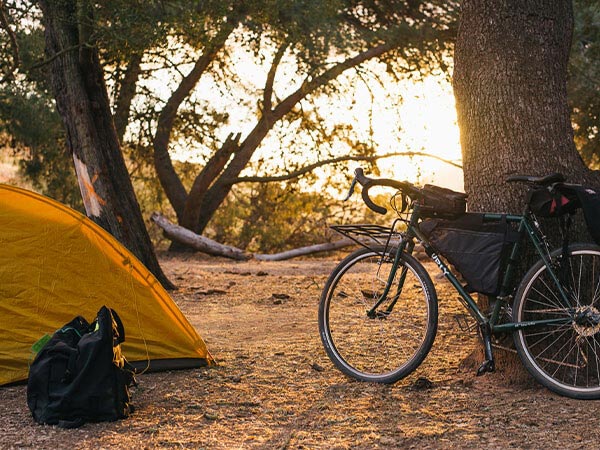
Bikepacking is what happens when mountain biking and minimalist camping get together and have a good time. Some bikepacking trips are under 24 hours (S24O). Others span a whole season. What they all have in common, however, is pedaling a bike loaded with the items most essential to your survival — jerky, liquids, tarp, monogrammed silk sheets for sleeping, etc.
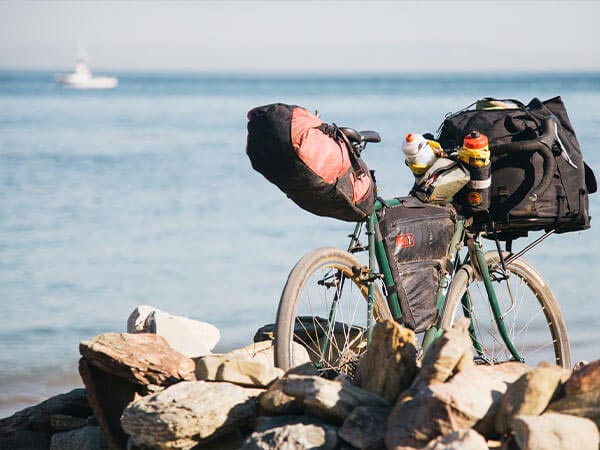
Other websites and publications might tell ya that Bike X and Bike Y are the best bikepacking bikes out there, but Surly subscribes to the belief that any functioning bike — with just a few modifications — can convey you and some gear to your campground of choice. I’ll even assert that the best bikepacking rig might be the one you’re on. But if you don’t have a bike just yet, or if the one you’ve got isn’t cutting it for the kind of riding you’re into, consider the terrain you want to explore before you start bouncing checks at your local bike shop.
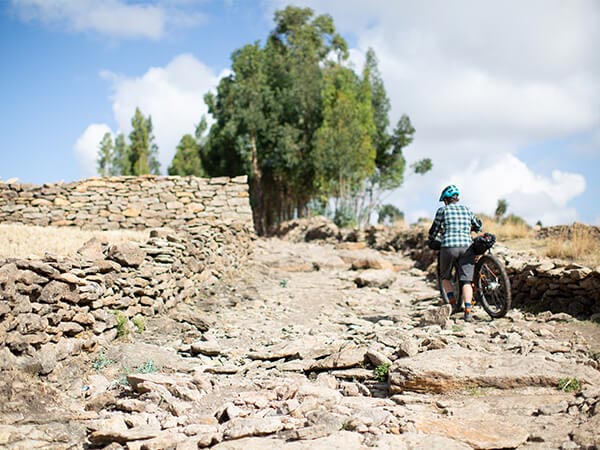
What Should I Look for in a Bikepacking Bike?
Determining the right bike for your adventures depends on where you want to ride. Just like high heels aren’t cut out for long hikes, a road racer with slick skinnies might not be a whole lot of fun on sand and shitty roads. Let’s run through some of the surfaces you might encounter during your excursion and check out the bikes built to handle them.
Mixed Terrain
If you’re spending more time on pavement than on dirt, a tried-and-true touring rig may be just the thing. Built tough and comfortable for long, multi-day rides, touring bikes offer a more relaxed, upright riding position, handling optimized for carrying a load, and useful mounting points for your racks, bags, fenders, and bottle cages.
A loaded bike is known to require more stopping power, and disc brakes provide adequate peace of mind. With clearance for cushy 26 x 2.1” tires (or 700c x 47mm), our value-packed drop-bar touring rig Disc Trucker smooths out bumps in all kinds of pavement and offers ample carrying capacity to help you stay gone awhile.
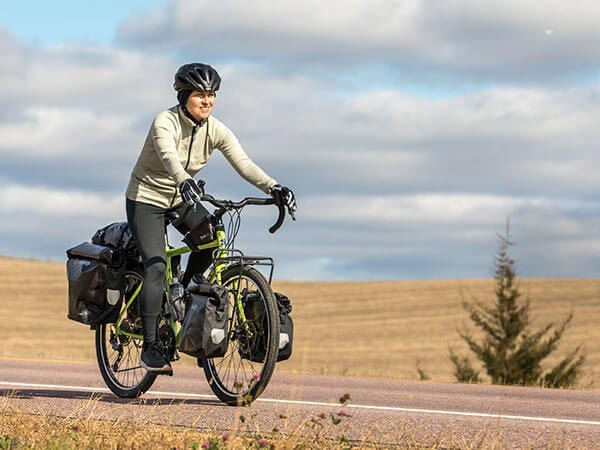
A touring bike like Disc Trucker can still hold its own on a little dirt. Hell, Pintz Guzzld recently took his pavement-focused Straggler/Pack Rat mashup on an urban overnighter, piecing together a route featuring back alleys and bandit trails. It’s a good reminder that a quality Chromoly steel frame is often more capable than whatever the SEO keywords say. But when you find yourself spending more time off-road than on, you might expand your search criteria to include all-road and gravel platforms.
Designed with clearance for wider, knobbier tires and the debris they tend to encounter, gravel and all-road bikes are still plenty comfortable and efficient on smooth surfaces. But when it’s time to contend with unpredictable detours, loose climbs and descents, and other obstacles on the trail, an All-Road Touring Bike like Bridge Club might be the right tool for the job.

Highly versatile and festooned with just enough mounts to accommodate fenders, racks, panniers, and/or frame bags, Bridge Club accepts tires up to 700c x 47mm, 27.5 x 2.8”, or 26 x 3”. With disc brakes for dependable stopping in spicy conditions, it takes whatever you throw at it and keeps rolling.
Gravel Roads and Fire Roads
If you’ve made the decision to abandon pavement for rural gravel and overgrown doubletrack, you’ll need to contend with rocks, sticks, roots, ruts, mud, water, and worse. You know, the fun shit. While Straggler and Bridge Club have the goods to ferry your gear along well-kept gravel, more degraded surfaces may be more enjoyable on a rigid or hardtail MTB. Though heavier and slower than a dedicated gravel bike, mountain bikes make up for their cumbersome weight with comfort and control when things get dicey.

Tough, lively, and versatile, Karate Monkey offers compatibility with 29er wheelsets as well as 27.5s. Set it up with the larger-diameter wheels (fitting tires up to 2.5” wide) to prioritize efficiency and roll over obstacles with ease. Go with 27.5” wheels (with tires up to 3” wide) to cut down on weight and improve acceleration and maneuverability. Whichever way you go, it’s a great option for bikepacking and bombing the trail after you’ve set up camp.
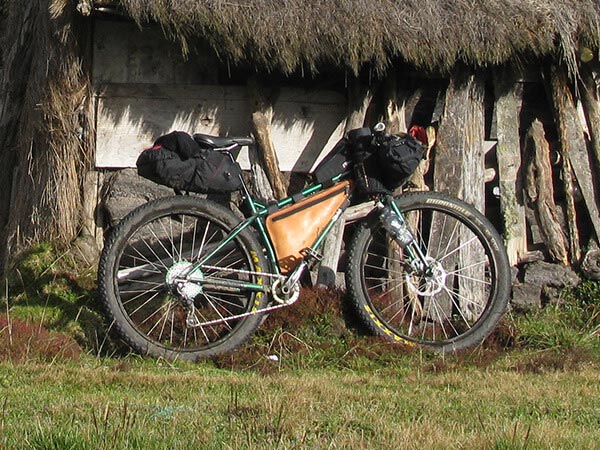
Then there’s Krampus, a dedicated 29er with clearance for 3” tires. Quick and capable on just about any trail you’ll come across, it brings you the best of both worlds in terms of rolling efficiency and shred factor.
For either bike, you’ve got the option to go fully rigid or soften up your ride with a suspension fork. I’m not going to tell you what to do, but keep in mind that a sus fork might eat up some of your real estate for cargo. If you need that space for your bread loaves and canned beans, you might lean toward a fully rigid setup. And if you go that route, maxing out your tire width and lowering your pressure will help you regain some cushion.
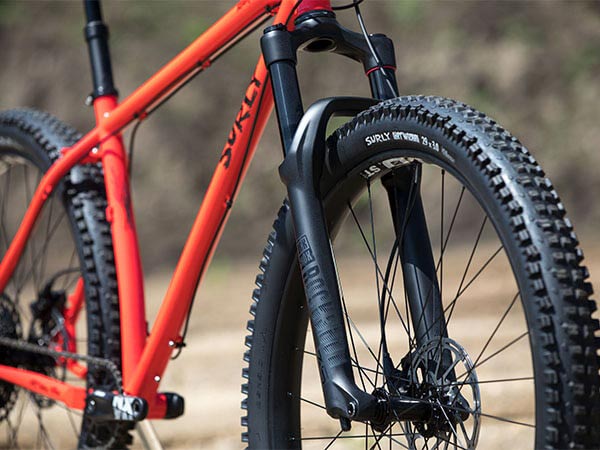
Singletrack
For folks itching to hit trails with more technical features — rock gardens, log piles, big drops, and the like — Karate Monkey and Krampus remain solid options. Run either bike with a 29er wheelset and a suspension fork, and you’ll find fun and games on nearly any surface. Once again, prioritizing performance on the trail might force you to make some difficult decisions in terms of the cargo you can haul, so make sure to account for this in your bikepacking calculus.
When your bikepacking route includes extreme terrain like fine pebbles, sandy beaches, or snow, fat bikes are the most capable creatures out there. With tires measuring 3.8” wide and up, they provide a large footprint for floating over soft stuff, finding traction where it wouldn’t exist otherwise, and comfy rubber cushioning over bumps, divots, and debris.
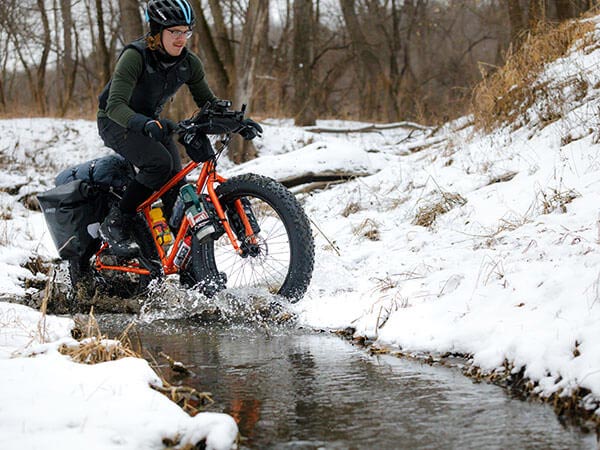
Our highly versatile fat tire trail bike Wednesday, for example, clears tires as large as 26 x 4.6”. It also accepts slightly narrower tires down to 26 x 3.8”, making Wednesday well suited for starring roles on dirt, technical trails, and lush wintry landscapes. And with all that cushioning built into its beefy rubbers, you may not need any sus fork at all — allowing you to maximize fork barnacles and the rest of the bike’s mounts for carrying camp stoves, drinking water, clean clothes, and whatever books you plan to burn for warmth.

Like Wednesday, our maximum tire clearance fat bike Ice Cream Truck is fully capable and a hell of a lot of fun on singletrack and technical features. With room for 26 x 5” tires, it honestly flat-out doesn’t care what’s in front of it. I mean, would you even think twice about walking over open flames or broken glass if your feet were encased in that much rubber? [Note: This is a rhetorical question. If the legal team doesn’t delete it, please refrain from participating in this exercise.] The point is, when you don’t know what your route has in store and you want to be prepared for all surfaces, substrates, and squalls, Ice Cream Truck is the bike that’ll get you to camp and back home again safely. Is it a bit too much bike for a quick overnighter on a calm July evening? Who’s to say. Fun is fun.

How Do I Start Bikepacking?
Whether your goal is to get some exercise, travel on a budget, spend time outside with friends, or experience familiar and unfamiliar camping sites in new and exciting ways, bikepacking is a tried-and-true strategy for stuffing more adventure into a shorter amount of time. Once you’ve got the right bike for the job, all ya gotta do is pack your bags and pick a route.
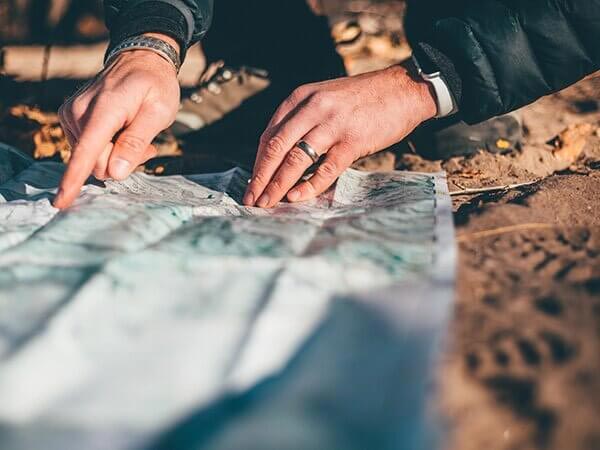
What Do I Pack?
For a full bikepacking gear list, head over to Bikepacking.com or check out our Winter Bikepacking Primer Spew. Everything you’ll need to survive a few days and nights in extreme cold is located therein. If you’re planning a warmer-weather trip, simply subtract the cold-weather items from your packing list and add bug spray.
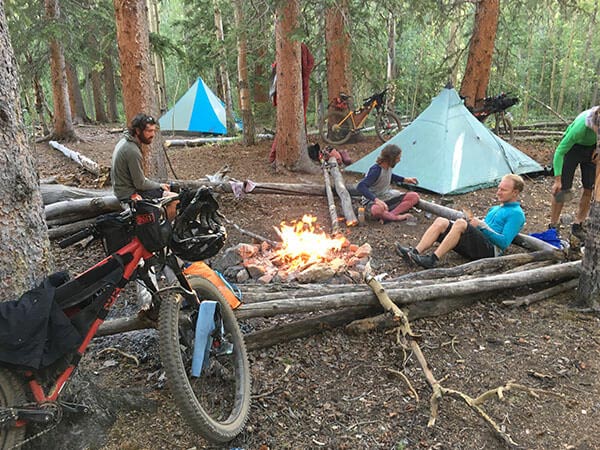
Where Do I Ride?
Bikepacking.com boasts over 82,000 miles worth of routes in 50 different countries, and riders are continually vetting and adding more. But while epic destinations like Appalachia, the Rockies, and the Baja Divide are all waiting to be explored, the same can be said for the trails and roadside attractions in your own hometown. As we’ve said before, the best bikepacking trips are the ones you actually take — so start small, map your route, and set your out-of-office messages before you go.
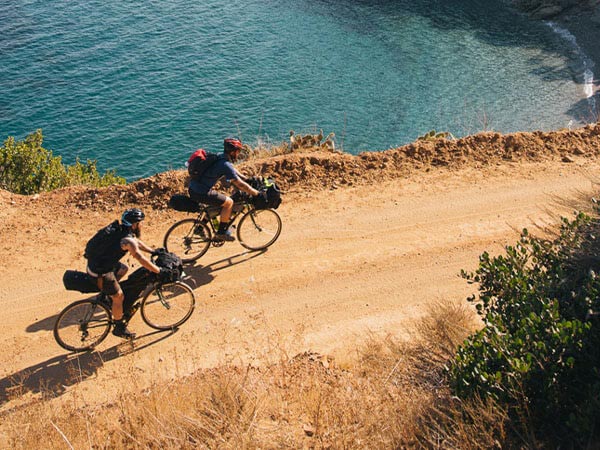
Anything Else?
At the end of the day, the best bikepacking bike is the one you can’t refuse. The one that makes you laugh at all the obligations on your calendar. The one that makes you wish you were already fuckin’ gone. It might be a hardtail or a gravel rig or a wild-ass klunker. Whatever. If you see your bike and you start feeling hungry for trees, tent sleeping, and all the tastiest trails, then you’ve got the right bike. Do yourself a favor and throw a leg over.
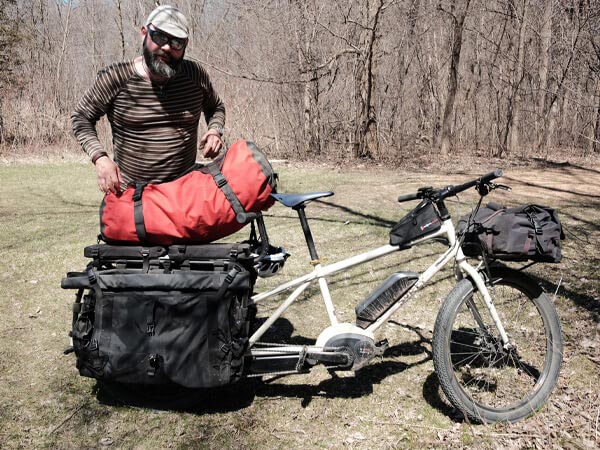
 Surly Bikes
Surly Bikes